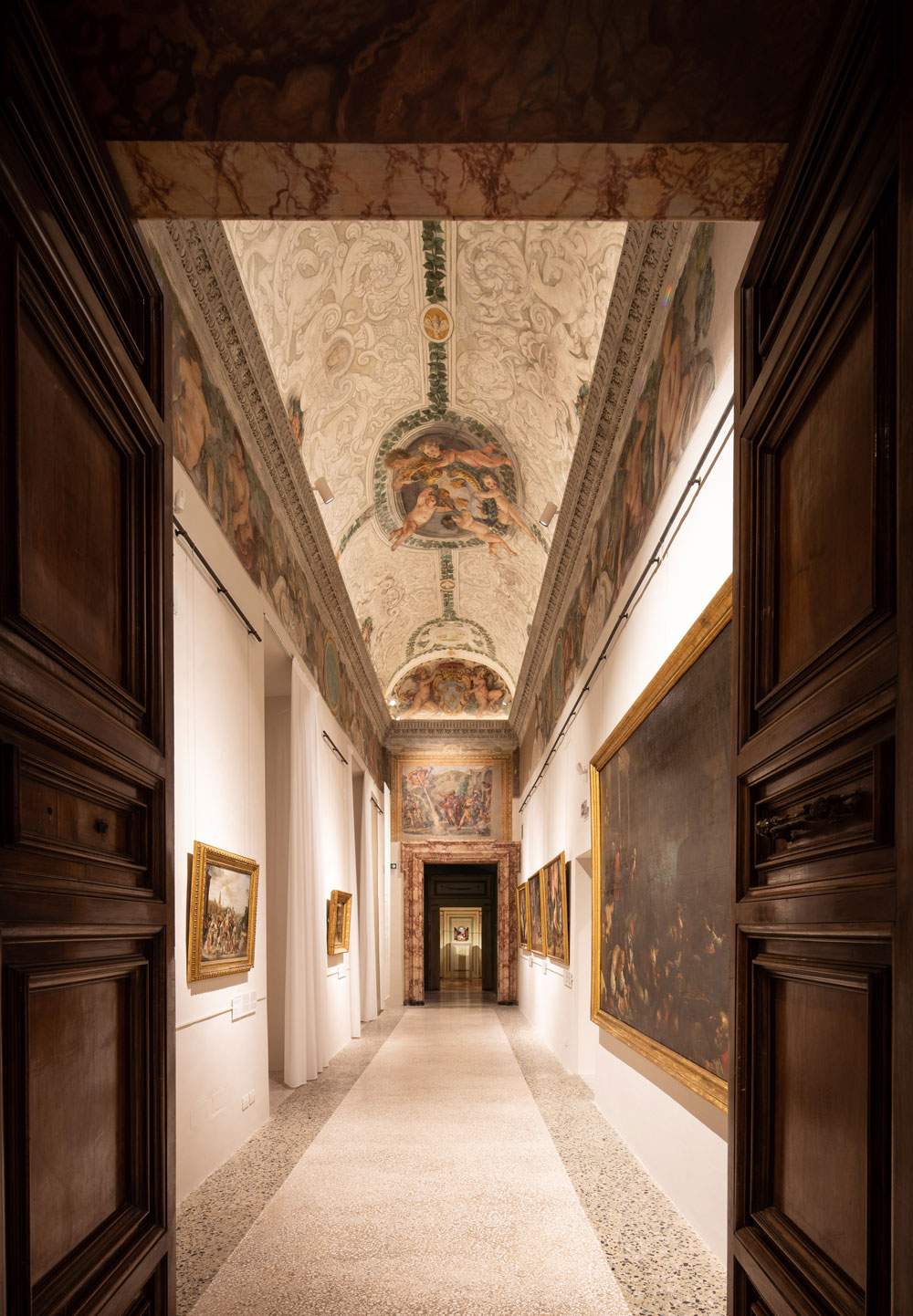As of December 13, 2019, ten rooms in theNorth Wing of the main floor of Palazzo Barberini reopen to the public: fully restored, they have been rearranged following a new exhibition itinerary according to a chronological and geographical order, and include works from the late 16th century to the 17th century.
The restoration involved the architectural structures, lighting system, graphics and educational apparatus in order to adapt these rooms to the recent renovation of the South Wing.
Eighty works were selected to construct an evocative circular route that allows, for the first time, visitors to admire the rooms from one wing of the palace to the other through the Salone Pietro da Cortona and the Sala Ovale. To accommodate the seventeenth-century masterpieces, thus offering visitors an understanding of the revolutionary scope of Caravaggio’s painting and his influence in Italy and Europe, the National Galleries of Palazzo Barberini have regained 550 square meters of exhibition space.
The North Wing begins with the room dedicated to late Roman and international Mannerism and then continues with the room devoted to the Venetians of the late 16th century: works by Tintoretto, Palma the Younger, El Greco, and the painting Venus and Adonis from the school of Titian, displayed after careful restoration, are found here.
The Gallery houses some paintings of genre painting and some never-before-exhibited canvases by Frans Francken the Younger; next, a small room open to public viewing for the first time is dedicated to Annibale Carracci’sPortable Altarolo.
It continues with the rooms of Caravaggio and Caravaggism with Merisi’s Judith and Holofernes in dialogue with works by Giovanni Baglione, Orazio Borgianni, Bartolomeo Manfredi and Carlo Saraceni. Also, the Narcissus attributed to Caravaggio and works by Ribera and Simon Vouet, Caravaggio’s St. Francis and works by Orazio Gentileschi, Bartolomeo Manfredi, and Bernardo Strozzi.
The last two rooms welcome works by European Caravaggesque painters such as Valentin de Boulogne, Giovanni Serodine, Lionello Spada, Matthias Stom, and Hendrick Terbruggen, and Bolognese painting by artists such as Domenichino, Guercino, Giovanni Lanfranco, Pier Francesco Mola, Guido Reni, and Simon Vouet.
“The rearrangement of the ten rooms dedicated to the seventeenth century represents the necessary continuation of the renovation work that began last January in the south wing of the Palace, which was inaugurated in April; next October it will affect the rooms dedicated to the sixteenth century and will then conclude in 2021, when the ground floor will also be rearranged. This is the fruit of the new conceptual layout of the museum that I have been thinking about since I took office in December 2016, and which focuses a narrative exhibition structure from the Middle Ages to the eighteenth century at Palazzo Barberini, also seeking to enhance the history of the palace and the Barberini family, while leaving intact the eighteenth-century picture gallery at Galleria Corsini,” said Flaminia Gennari Santori, director of the National Galleries of Ancient Art at Palazzo Barberini and Palazzo Corsini.
Ph.Credit Alberto Novelli
 |
| Palazzo Barberini's 17th-century rooms reopen to the public |
Warning: the translation into English of the original Italian article was created using automatic tools. We undertake to review all articles, but we do not guarantee the total absence of inaccuracies in the translation due to the program. You can find the original by clicking on the ITA button. If you find any mistake,please contact us.